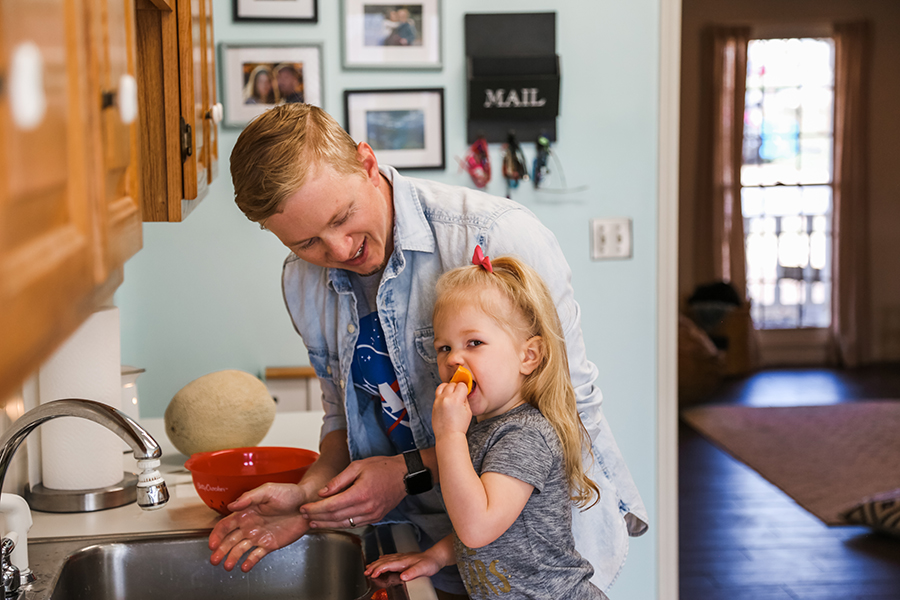
Published on July 6, 2022
Read Time: Three Minutes
Teaching your toddlers and young children to develop healthy eating habits is essential. Some of the most important habits we learn occur through repetition and modeling from our parents.
Healthy eating habits are learned through interactions with our parents and family, the foods we eat and the enjoyment experienced during mealtime.
Below are answers to frequently asked questions about teaching children to eat healthy food.
How often do children need to eat?
Children need to eat three balanced meals and one to two healthy snacks per day.
Grazing all day long is not recommended as it does not mimic appropriate mealtimes and learning how to feel full. Having regular mealtimes allows for the family to spend time with each other, as well.
What does a balanced diet look like for children?
A balanced diet contains the following:
- Whole grains
- Vegetables
- Fruits
- Dairy
- Protein
How much protein does my child need?
Protein is important for children but should not be overemphasized. When considering how much protein children should eat per day, follow these guidelines:
- Children ages 4 to 9: About 19 grams
- Children ages 9 to 13: About 34 grams
- Teens ages 14 to 18: About 46 grams for girls and 52 grams for boys
What should I do if my child only wants to eat one type of food?
Having your child always wanting to eat the same thing can be difficult, but your child’s favorite food often changes.
You should provide a variety of foods, and the family should be eating together to share the enjoyment of those foods. Children need grains, proteins, vegetables, fruits and fats to get all the nutrients they need.
Try offering several other choices in addition to the favorite food. In addition, try taste-testing other foods along with their favorite meals.
How much milk should my child drink?
While milk is good for children, milk should not be the most important drink. Transitioning from breast milk or formula to milk after the child’s first 12 months is highly suggested, although many women breastfeed for longer than a year.
Follow these general guidelines for how much milk children should drink per day:
- 12-24 months: 2-3 cups (16-24 ounces)
- 2-4 years old: 2-2½ cups (16-20 ounces)
- 5-8 years old: 2½ cups (20 ounces)
- 9-18 years old: 2-3 cups (16-24 ounces)
Can my child have snacks or juice?
Children can have one or two snacks per day, but the choice of snack is key. Vegetables and fruits make great snacks.
Juice is mostly sugar, so it should be diluted with water. No more than 4 ounces of juice daily is recommended. Some children benefit from 4 ounces of prune or apple juice to help with constipation.
How does diet affect a child’s brain development?
Nutrition is an important part of brain development and growth in children of all ages. The brain is a large and complex organ that performs many functions and helps regulate the body.
Brain formation begins during pregnancy, accelerates during early childhood and remains steady through the adolescent years.
Children should consume the right amounts of carbohydrates, proteins and fats as well as vitamins and minerals, plus water, to support brain development.
Have Questions About Healthy Eating for Children?
Learn more about healthy eating patterns and nutrition from the Dietary Guidelines for Americans.